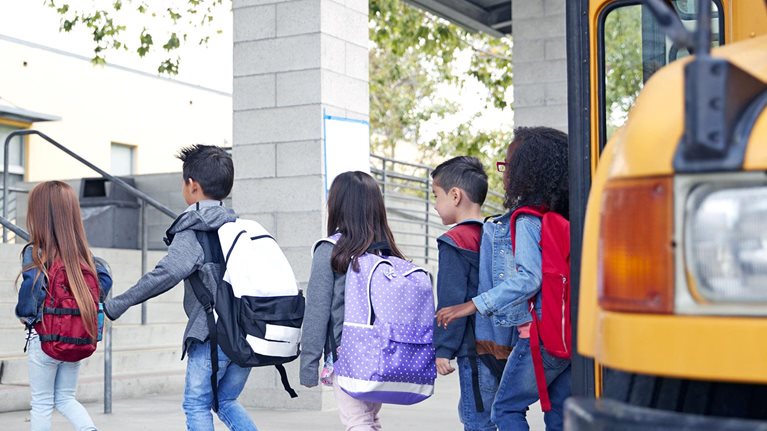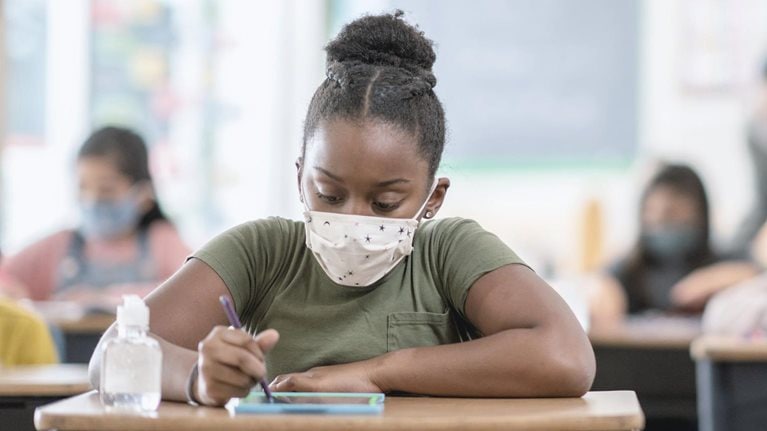The impact of years of COVID-19 pandemic learning disruptions is coming into focus, and the picture is grim. According to the latest National Assessment of Educational Progress (NAEP), or “The Nation’s Report Card,” some two decades of progress have been wiped out. Average math scores for fourth and eighth graders in 2022 fell by five and eight points, respectively, compared with 2019 levels, while average reading scores fell by three points.
One point on the NAEP scale represents roughly three weeks of an academic school year, according to Andrew Ho, a Harvard professor who served on the board that administers the assessments. By that calculation, students in 2022 were on average about 15 to 24 weeks behind in math and nine weeks behind in reading compared with 2019, or a quarter to half a school year behind.
If student performance improvement follows historical prepandemic trends, it could take decades for students to fully catch up. But resources are available to help students recover more quickly. The federal Elementary and Secondary School Emergency Relief Fund (ESSER) allocates $190 billion to the nation’s schools to address the impact of the COVID-19 pandemic. How these funds are deployed will likely pivot on the unique needs of students within each state and district, because the COVID-19 pandemic did not impact every part of the country equally. Students in some areas are only a few weeks behind, while others are nearly a year behind. Initial recovery efforts are also in different stages. To date, some states have spent less than 20 percent of their share of ESSER funds (across both state and district spending)—placing them at risk of leaving funding on the table. Others have already spent over half of their share.
Although many of the decisions affecting education are made at the local or district level, states do have an important role to play—by understanding the situation across the districts in their jurisdiction and supporting recovery initiatives. Below is a breakdown of pandemic-related learning loss and ESSER fund deployment at the state level. Data is derived from multiple sources including NAEP assessments, pandemic schooling modality, prepandemic school funding, as well as ESSER allocations and spending to date.
If student performance improvement follows historical prepandemic trends, it could take decades for students to fully catch up. But resources are available to help students recover more quickly.
The pandemic has erased more than 20 years of progress on NAEP assessments. Barring unforeseen disruptions, if student performance improves at rates similar to historical trends, fourth-grade students will not catch up to 2019 math levels until 2036, and reading levels until 2044, while eighth graders won’t recover 2019 math levels until 2050.
The 2022 NAEP assessments showed an average four-point drop in learning nationally compared with 2019. That translates into an average of 12 weeks of learning delay, or about a third of a typical school year. But results vary significantly between states. Some saw only a one-point drop in learning, while the worst affected saw double-digit declines. In 17 states, students are more than half a year behind on average. In the worst-affected states, students may be almost a full school year behind.
Several organizations measured student access to in-person learning during the 2020–21 school year, when state policies and practice varied tremendously. Plotting this data against the change in NAEP score by state reveals a weak correlation between access to in-person learning and pandemic-related learning delays—in contrast to previous studies at the district level or within states that showed a strong correlation over the same time frame. This difference suggests that substate factors such as uptake of in-person learning offerings, or other developments beyond the 2020–21 school year, may be influencing student learning trajectories measured by NAEP.
Individual state policies for in-person versus remote learning during the 2020–21 school year is just one element that impacted NAEP math and reading scores during the pandemic. Other factors include pre-COVID-19 learning trends; the quality and deployment of remote-learning programs; quarantine and testing policies; shifts in enrollment demographics; and the launch of recovery efforts during the 2021–22 school year. There are also factors external to schools, including the disproportionate impact of the COVID-19 pandemic on historically marginalized communities. Upshot: each state has a unique learning loss trajectory. Understanding interrelated factors beyond NAEP data can therefore help inform and prioritize learning recovery efforts.
NAEP scores also reveal widening gaps among students. While both high- and low-performing students lost ground, the pandemic disproportionately impacted those in the lowest-performance quartile, putting them more than six weeks behind their peers in the top-performance quartile. Move from a national to a state-by-state lens, and the gap is even more pronounced. In four states, students in the bottom quartile fell behind by 15 weeks more than their higher-performing peers. In 22 states, students from the bottom quartile suffered learning delays of more than 18 weeks due to the COVID-19 pandemic, equal to half a year or more of learning.
Collectively, states and districts have received more than $190 billion in federal ESSER funding to address the impact of the COVID-19 pandemic on schools and students. ESSER funding was allocated based on Title 1 funding, which reflects roughly the number of disadvantaged students in each state. Local education agencies (LEAs, primarily school districts) received 90 percent of funds, with state education agencies (SEAs) retaining up to 10 percent. All funds must be obligated by September 2024. Approximately halfway through the funding window, states (and the districts within them) have spent varying portions of their ESSER allocations—from under a fifth in the District of Columbia and Vermont to just over half in Iowa and Hawaii.
Since learning delays and the amount of federal funding available to help students catch up differs by state and district, there is no one-size-fits-all recovery strategy. ESSER funds are allocated to states based on Title 1 funding allocations, while learning delays are ten times greater in some states than in others. If we consider these two factors in tandem, on a per-student basis, some states have more than $1,000 to address each week of learning delay, while others have under $200.
School systems were not designed to easily provide 12 or more additional weeks of learning during the year, so more cost-effective methods will likely be needed to help students regain lost ground. For example, if quality, intensive tutoring can be scaled effectively, it could cost under $100 per student per week of additional learning gained. States can get an idea of potential resource gaps by comparing the ESSER funding available per week of learning delay to the average cost of educating a student for a week.
Supporting efforts to help students catch up
While 90 percent of ESSER funds go directly to LEAs (mostly districts) and many of the day-to-day decisions affecting students are made by districts, state leaders can consider three strategic steps to help support districts in their efforts to help students catch up: (1) assess current learning performance and recovery efforts across their state; (2) group districts according to the degree of support needed; and (3) engage a variety of mutually reinforcing levers at the state level to support districts.
Levers available to SEAs include the following:
- Putting policies in place. For example, 28 states have passed some form of Science of Reading mandates requiring high-quality instructional materials or teacher professional development aligned to standards.
- Boosting financial resources for districts. Additional funding could be allocated to districts that are advancing priority initiatives, in addition to the 90 percent of ESSER funds already allocated to LEAs—either from the ESSER state set-aside or other state funding sources.
- Providing information for districts to aid learning loss recovery. States could support districts by providing tool kits and how-to guides for districts—for example, on implementing effective tutoring programs.
- Enhancing technical supports for districts. States could fund communities of practice or direct technical assistance to districts through community partners or technical-assistance providers. These providers could help groups of districts strategically allocate ESSER dollars or accelerate priority initiatives such as tutoring or summer school.
- Delivering services directly to districts. Occasionally, states can also directly purchase services for districts. For example, some states have purchased formative assessment or digital instructional software to support consistency across the state and capture economies of scale through state-brokered vendor negotiations.
With approximately two years left before remaining ESSER funds must be spent, states can play an important role in supporting districts by ensuring these funds deliver maximum impact and help students across the country overcome pandemic-related challenges, placing them on track for the bright futures they all deserve.
States can play an important role in supporting districts by ensuring Elementary and Secondary School Emergency Relief funds deliver maximum impact for students.










